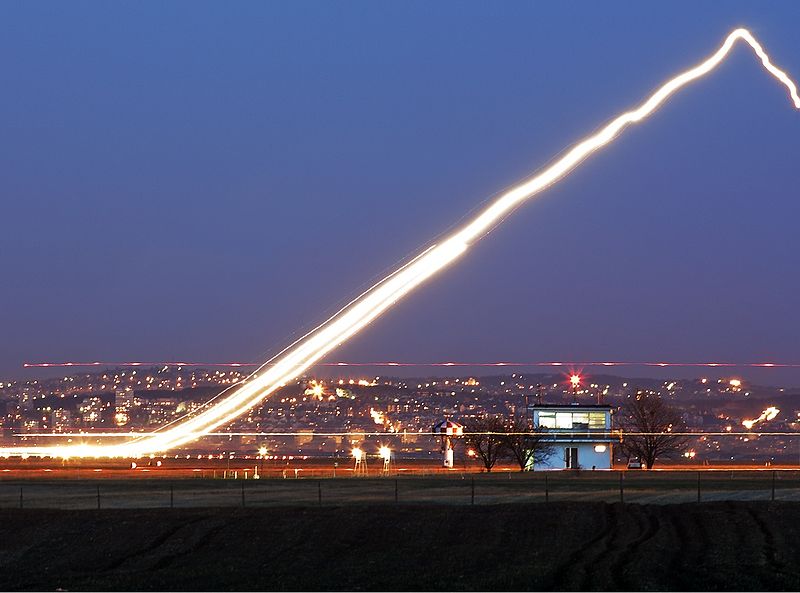We can tell it's not a missile simply because it's a 20 second exposure, and so the "missile" on the "top" of the streak would not actually show up. It has to be another moving light - i.e. it's an object with at least two lights.
Initial analysis focussed on the possibility of it being a plane flying towards the camera. Aircraft in level flight can look like they are rising or falling straight up or down if they are flying directly towards or away from the camera.
A more promising suggestion was that is was a helicopter, moving AWAY from the camera.

This was first suggested by Tyler Rogoway at The Drive, and subsequent analysis of ADS-B flight data confirmed that this was the correct explanation.

The grey streak being the dimmer light on the tail.

Initial analysis focussed on the possibility of it being a plane flying towards the camera. Aircraft in level flight can look like they are rising or falling straight up or down if they are flying directly towards or away from the camera.
A more promising suggestion was that is was a helicopter, moving AWAY from the camera.
This was first suggested by Tyler Rogoway at The Drive, and subsequent analysis of ADS-B flight data confirmed that this was the correct explanation.
The grey streak being the dimmer light on the tail.
----------------------------------------------------------------------------------------------------------
Via Cliff Mass:
https://cliffmass.blogspot.com/2018/06/was-there-unannounced-missile-launch-on.html
The first thing to note is that it's a 20 second exposure, so what we are looking at is NOT a trail, but a streak of light from a moving light source, like a rocket, or a light on a plane.Greg Johnson of Skunk Bay Weather on the northern Kitsap Peninsula has one of the most impressive weather cam facilities in the nation, including high quality digital cameras photographing the clouds at night. He is an extremely reliable weather observer.
But early Sunday morning he picked up something that is both startling and unexpected: what looks like a missile launch from Whidbey Island.
Here is the picture (with a 20-second exposure) at 3:56 AM Sunday morning from one of his cameras (looking north towards Whidbey Island). Can you see the bright vertical streak on the left side of the figure? Note the illumination both inside and outside the cloud. It really looks like the ascent of a rocket.
Sure looks like a rocket. However that's because it looks like a trail. It more likely a point of light.
The next thing to notice is that the "trail" gets bigger the higher it is in the image, which means that the object is moving towards the camera.
So I suspect it's simply a plane, with landing lights on, flying towards the camera, and quite possible descending.
The grey streak of light in front of the bright light is probably one side of the fuselage, illuminated by the forward facing landing light.
The Landing light itself is off-center
The streak is red on the other side, possibly another light.
Last edited:




